Newgrange - Guest Photographs III
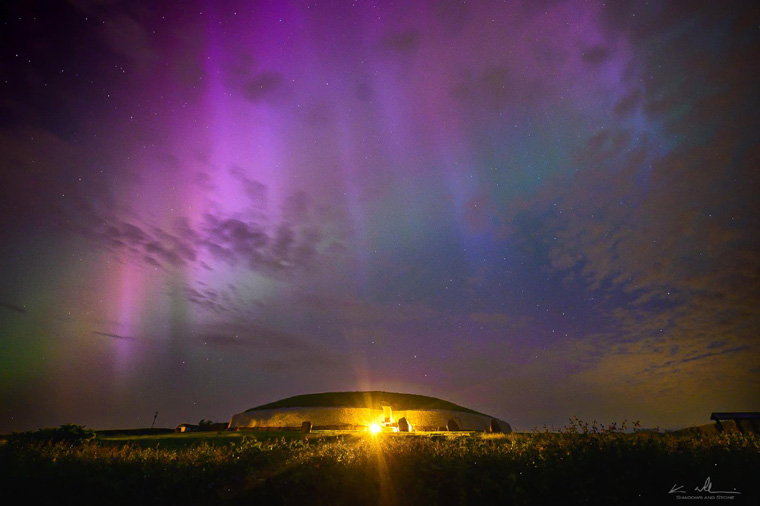
Northern Lights (Aurora Borealis) at Newgrange | Photo by Ken Williams
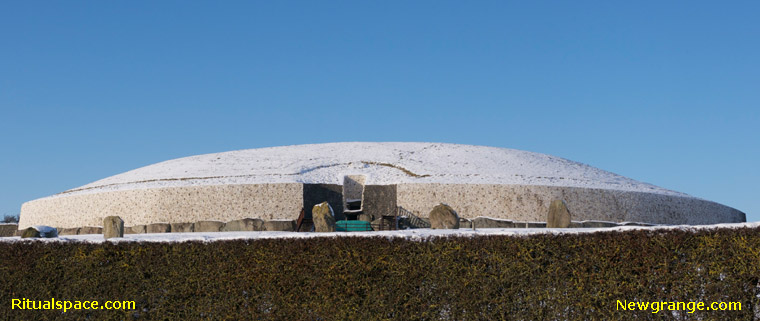
Newgrange - December 2010 | Photo by Raymond Manley
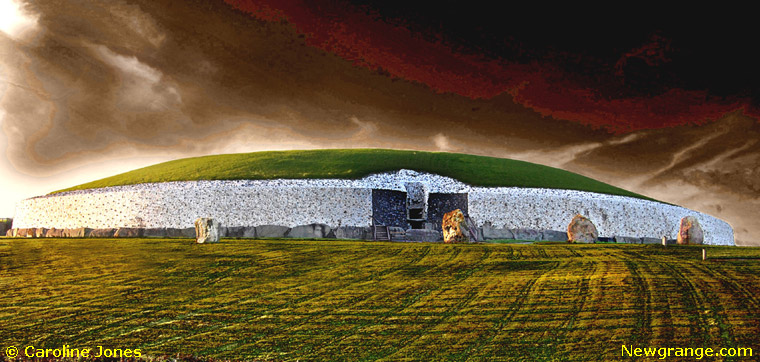
Newgrange - Digitally enhanced image by Caroline Jones

The white Quartz facade of Newgrange | Photo by Hywel Evans
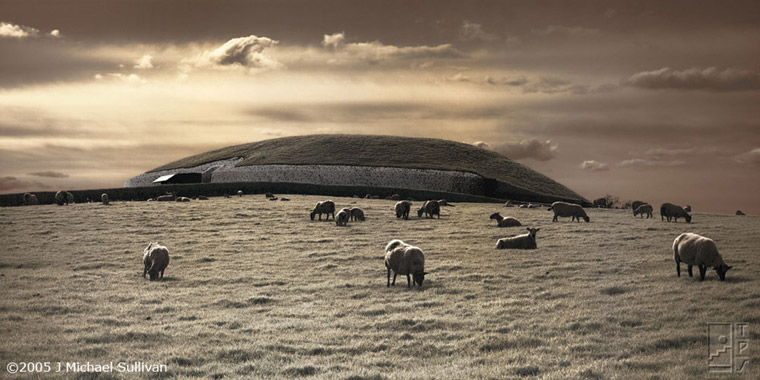
Infrared photograph of Newgrange | Photo by J Michael Sullivan

Newgrange Aerial view | Photo by Gary McCall

Newgrange in Ireland's Ancient East | Photo by Adam Dorman
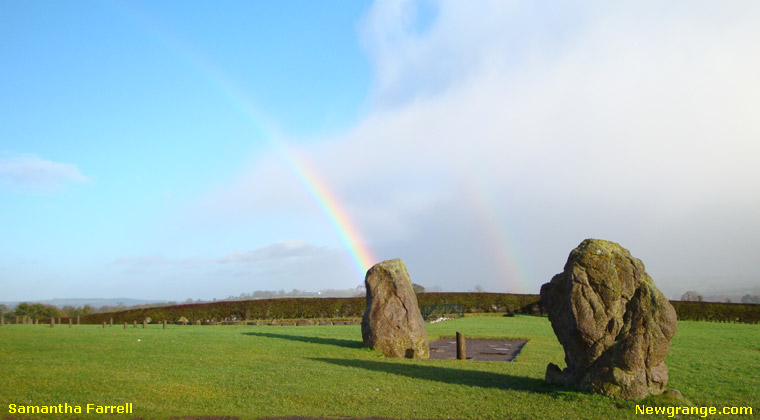
Rainbow over the Standing Stones at Newgrange | Photo by Samantha Farrell
About Newgrange
Newgrange was built about 3,200 BC (5,200 years ago) during the Neolithic period, which makes it older than Stonehenge and the Egyptian pyramids. Newgrange is a large circular mound with a stone passageway and chambers inside. The mound is ringed by large stones known as kerbstones some of which are engraved with artwork.Archaeologists classified Newgrange as a passage tomb, however Newgrange is now recognised to be much more than a passage tomb. Ancient Temple is a more fitting classification, a place of astrological, spiritual, religious and ceremonial importance.
The passage and chamber is aligned with the rising sun on the mornings around the winter solstice. It is the best know monument within the Brú na Bóinne complex, alongside the similar passage tomb mounds of Knowth and Dowth, and as such is a part of the Brú na Bóinne UNESCO World Heritage Site. Newgrange also shares many similarities with other passage tombs in Western Europe, such as Gavrinis in Brittany, Maeshowe in Orkney and Bryn Celli Ddu in Wales.
After its initial use, Newgrange was sealed and it remained so until the passage and chamber were rediscovered in 1699. In the 1970s, the front of the monument was reconstructed.
The Neolithic people who built the monument were farmers, growing crops and raising animals such as cattle in the area where their settlements were located; they had not yet developed metal, so all their tools would have been made out of stone, wood, antler or bone.
Boyne Valley Private Day Tour
 Immerse yourself in the rich heritage and culture of the Boyne Valley with our full-day private tours.
Visit Newgrange World Heritage site, explore the Hill of Slane, where Saint Patrick famously lit the Paschal fire.
Discover the Hill of Tara, the ancient seat of power for the High Kings of Ireland.
Book Now
Immerse yourself in the rich heritage and culture of the Boyne Valley with our full-day private tours.
Visit Newgrange World Heritage site, explore the Hill of Slane, where Saint Patrick famously lit the Paschal fire.
Discover the Hill of Tara, the ancient seat of power for the High Kings of Ireland.
Book Now
Home
| Visitor Centre
| Tours
| Winter Solstice
| Solstice Lottery
| Images
| Local Area
| News
| Knowth
| Dowth
| Articles
| Art
| Books
| Directions
| Accommodation
| Contact
